SPC CMS solutions
The migration to IP alarm communications can be complex or simple, the key is to choose the right technology for your business. At Vanderbilt, we work with many of the market leading technology providers to ensure that your monitoring solutions can offer the best support to your SPC customers. Below you will find a range of solutions that you can use, this information is intended as a guide to help you choose the right technology and we would advise you to discuss your needs with the solution provides.

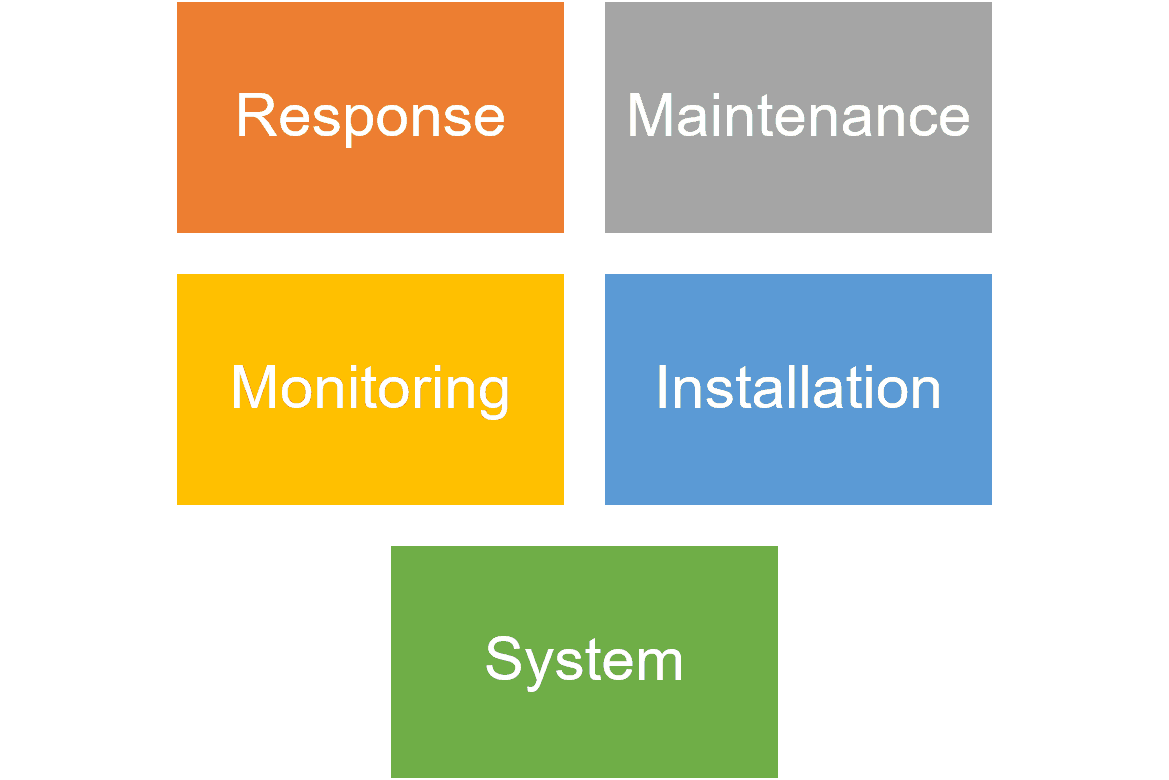
The security of every system is determined by the quality of the
- Products
- Installation
- Maintenance of system
And of coarse monitoring, if a system is not monitored it is not protected. As SPC is all about communications we have a range of solutions for the monitoring sector
The SPC provides a range of solutions for communicating with Monitoring stations
These include
- ARC communication – this uses a dial-up connection to report a selection of analog alarms
- EDP – A simple IP communications system
- FlexC – An IP communication that can also use analog means of communication
Terminonolgy
CMS - Central monitoring station /ARC – Alarm receiving center
An alarm monitoring center or central monitoring station (also known as "CMS" or wholesale alarm monitoring) is a company that provides services to monitor burglar, fire and residential alarm systems. The Central Monitoring Station may also provide watchman and supervisory services.
These two terms are interchanged dependant on the region and company
Account code
This is the code used by the ARC/CMS to identify the customers, all events are generally sent with this identifier
The issuing and managing of account codes is key data for the management of security systems
Most security systems allow the installer to enter an account code per security system, SPC FlexC allows multiple account codes per system.
Primary path vs back up
In all alarm communications systems, the system will allow for the definition of a primary path, this is where events will be sent and can be either a phone number or IP address, the backup path is used if the primary fails.
Note all communications systems offer the same functionality here, with some systems allowing for complex reporting priority definitions such as FlexC.
SOC Services operation center.
As monitoring services become more advanced, the operators no longer just handler alarms the operations center can provide more services for the end customers that will improve the performance of the business.
SPC excels in this capacity and Vanderbilt have unique solutions that can help deliver these services
Category
Each region will define the standards for alarm reporting in terms of
How often the system should be tested, polling
Timeouts
Primary path operation
Secondary path operation
These Categories will vary by region and it is important to know which categories apply to your grade and region.
EN 50136
These are a range of standards that cover various aspects of alarm signaling and communications, the subsection of the standards cover how the SPC will react with the communications paths, how the receiver will behave.
The PSTN, GSM and IP module of the SPC system comply with EN 50136-1
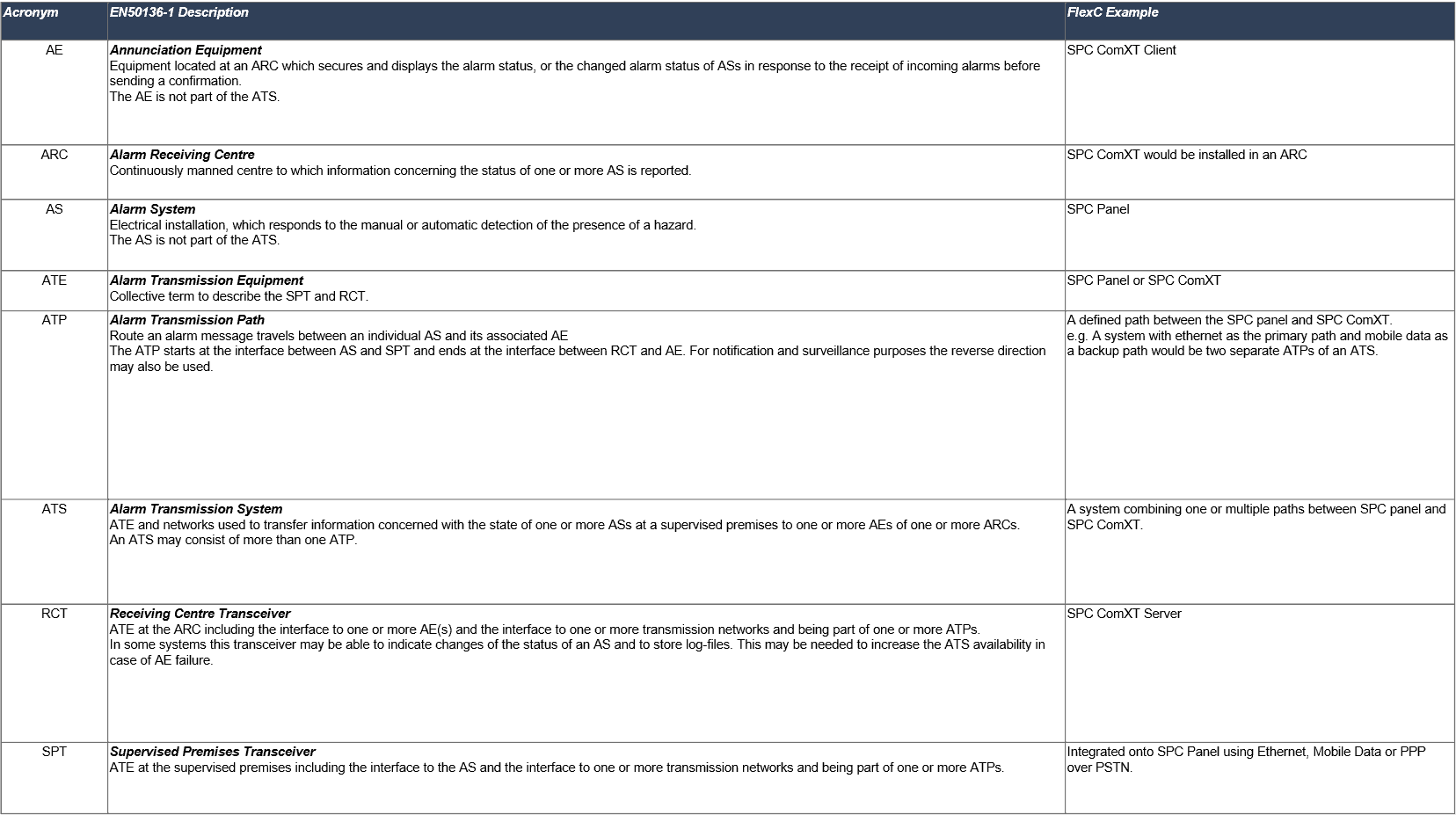
ARC communication
This is the traditional means of communication, the installer enters the phone number of the monitoring station and an account code.
When an event occurs the call system dials the monitoring station and reports the event, the monitoring station confirms and the alarm systems end the call.
The SPC can support a number of these formats including
- SIA /SIA Extended 1/ SIA Extended 2
- CID
- Fast format (legacy)
- DD integration
What is SIA?
SIA transmit a number of ASCII characters when the event is represented by 2 characters
- BA Burglary alarm
- BV Burglary verified
The next element includes the “address” this is relative to the event type and can be the zone or area number of the event
The next element is the description which could be the zone or area name for example
Note: due the digitisation of the phone network SIA has become unstable in many regions
What is CID?
CID transmit a number of digi numbers when the event is represented by a number and a qualifier.
For Example, an alarm and restore will use id 130 and the qualifier will signal alarm or restore
CID on SPC transmit a range of events and this continues to operate in many networks today
What is DD integration?
Direct Dial integration is when the customer uses an external device to report alarm such as
- Web way, CSL, ADD secure, Chiron etc
In this case, the SPC will be connected to these modules using either the PSTN or serial connection, in some cases, they will use IP.
In this setup, the SPC is isolated from the communications to the monitoring station and the external module will perform all communications.
The reason a company may use this is to simplify the installation process however by not using the IP communications the integration information is greatly reduced.
How to setup ARC from keypad
What is EDP?
EDP was supported in SPC from its first release.
It allowed for
- IP communication from SPC systems over ethernet or GSM.
- Supported a single Backup over GSM
- Event information largely based on SIA
- Provides command interface
EDP is widely supported by IP receivers and our integration partners, the information it provides is on a par with SIA but is somewhat limited. The command set on EDP is not very detailed it however if does allow for basic commands on the system
EDP has two primary modes of operation,
- Master mode – where The SPC creates the connection to the server
- Slave mode – Where the SPC will accept incoming connections
This can use TCP or UDP
The IP link is then used to transfer events and commands between the SPC and the server.
The EDP specifications are available for third party integration under NDA however we would recommend using FlexC to future proof design.
What is FlexC?
FlexC for secure multi-path reporting
- New communication concept
- Easy configuration of event transmission
strategies to independent alarm organizations. - Secure multi-path reporting AES256 bit encryption
- Fully based on EN50136:2012 standard (supervision)
- Additional use cases supported compared to existing
implementation for alarm transmission.
Examples
- Using GPRS networks from 2 different providers
- PSTN as a backup path to Ethernet communication - Import / Export of communication settings
- Export of reporting settings (e.g. specific CMS setup with
protocols, com paths, supervision timings, destinations, event profiles)
Import of communication settings
(e.g. pre-defined CMS settings can be imported by the installer).
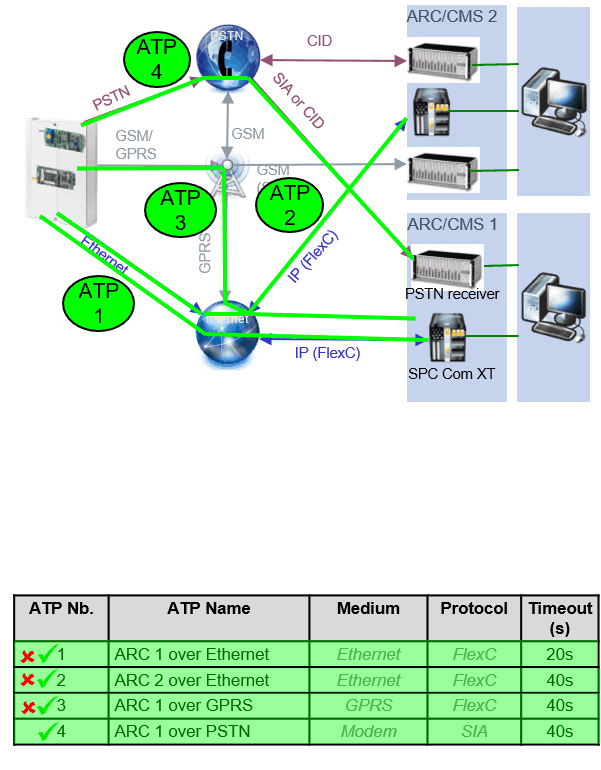
FlexC in detail
FlexC enables easy reporting configuration
- Up to 10 Alarm Transmission Systems per panel
- The ATS describes the main path and backup paths (reporting strategy) used to report events to an alarm organization. Examples:
ATS1: Triple path communication (Ethernet with GPRS/PSTN backup) to ARC with multiple receivers
ATS2: Single Ethernet communication to Danger Management
Systems - Unique Panel ID definable per ATS
(e.g. for multi-tenant reporting) - Up to 10 Alarm Transmission Paths per ATS*
- The ATP describes the
- communication protocol (FlexC, SIA, Contact ID)
- transportation path (Ethernet, GPRS, GSM, PSTN)
- polling timers/time outs for different security levels
(as defined in EN50136:2012 for various security grades)
- Receiver destination (URL / IP address, Tel Number)
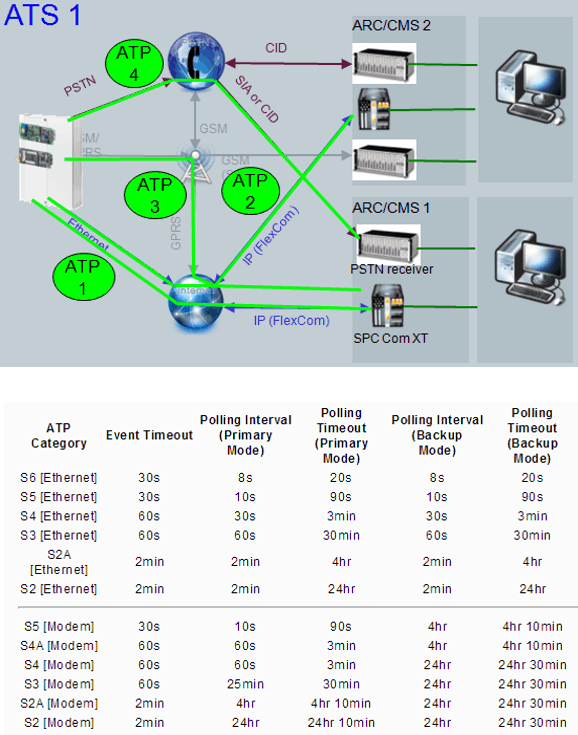
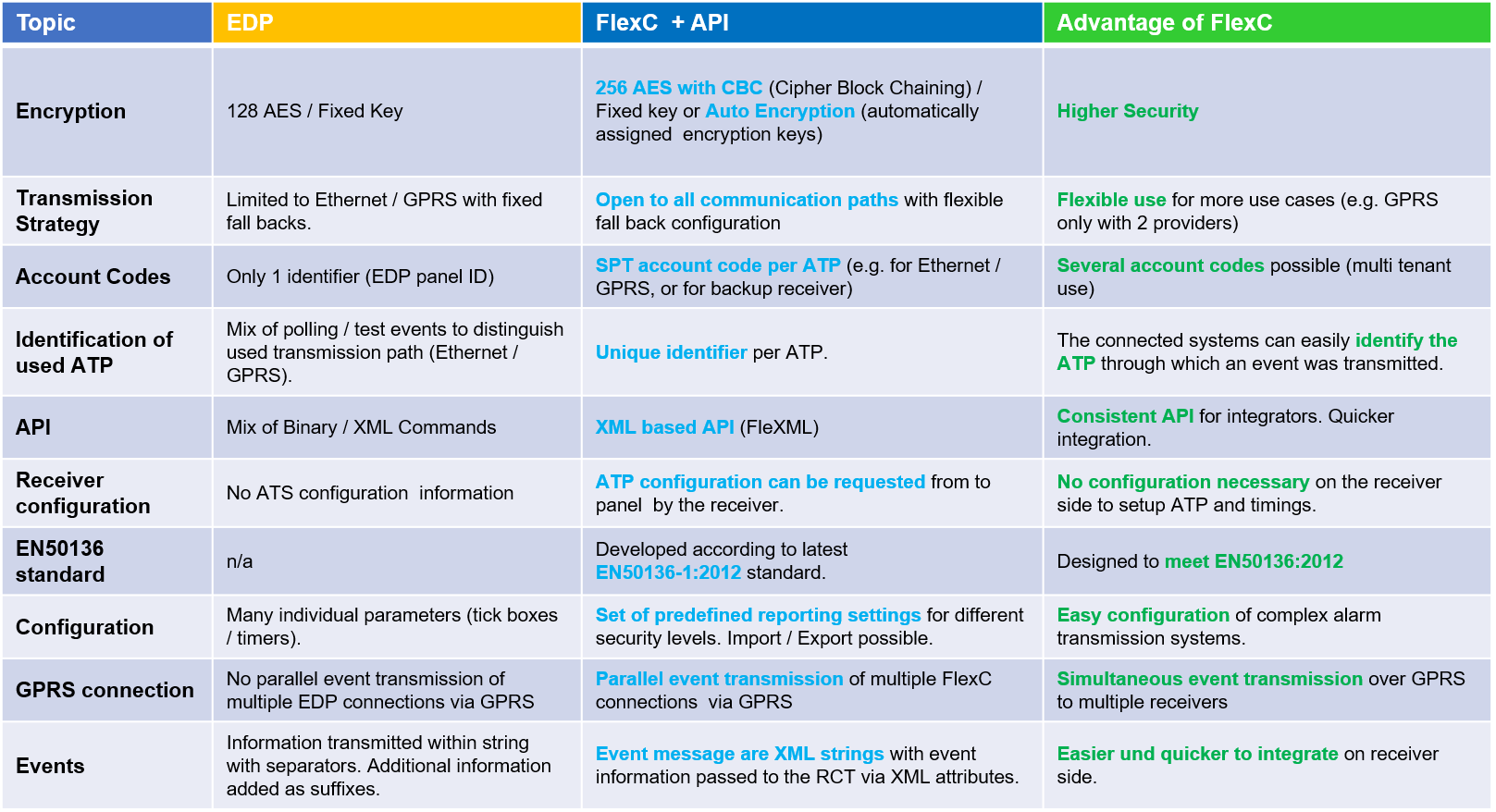
FlexC allows flexible event filtering
- Up to 20 Event Profiles
Filter for SPC events which are reported with FlexC for all protocols (SIA or CID based)
An Event Profile describes all events which the SPC reports/does not report within a FlexC ATS
Every ATS can have a different Event Profile
- Event Filter Groups with Exceptions
A profile contains 21 event filter groups which can be enabled / disabled
(e.g alarms, tampers, restores, settings, inhibits & isolates, …)
Up to 100 definable exception within the system to define exceptions for event filter groups.
- Stop event (e.g. all code tampers)
- Pass specific events (e.g. pass only Medical Alarm)
- Convert event (eg remap tech zone to specific zone nb)
FlexC API
The API addresses current and future needs of system integrators and operators
- API to control SPC
Command set to control SPC from an external system
Command Profiles (max 10) in SPC which commands are accepted by an ATS
- Individual rights for connected systems:
The commands accepted by SPC panel is matched with the user rights stored in SPC for the specific system/operator.
- ATP configuration request
ATP configuration of the panel can be requested by the receiver (auto configuration of receiver possible)
- XML based:
The API is XML based
Support for binary data (video / audio / firmware files) and compression
Third parties can obtain the FlexC specifications under NDA from Vanderbilt, once the NDA is signed Vanderbilt will provide the FlexC specification and FLEXML command set.
SPC communications FlexC - Setup alarm reporting receiver
SPC communications FlexC - Setup alarm reporting receiverSPC How to configure ARC SIA CID using FlexC
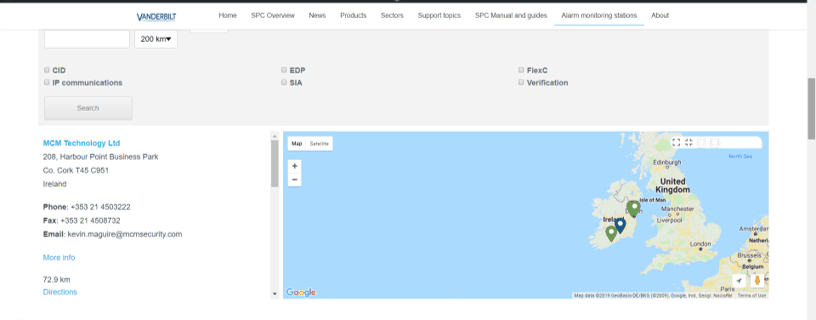
CMS listing
- If a customer wishes to register with Vanderbilt they can complete the online form, click here
- Having CMS coverage across the world will greatly help our customers in the solutions they will to deliver
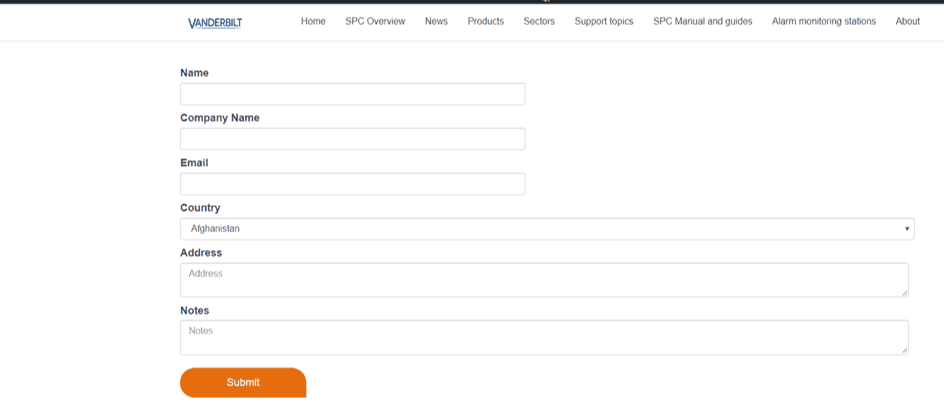
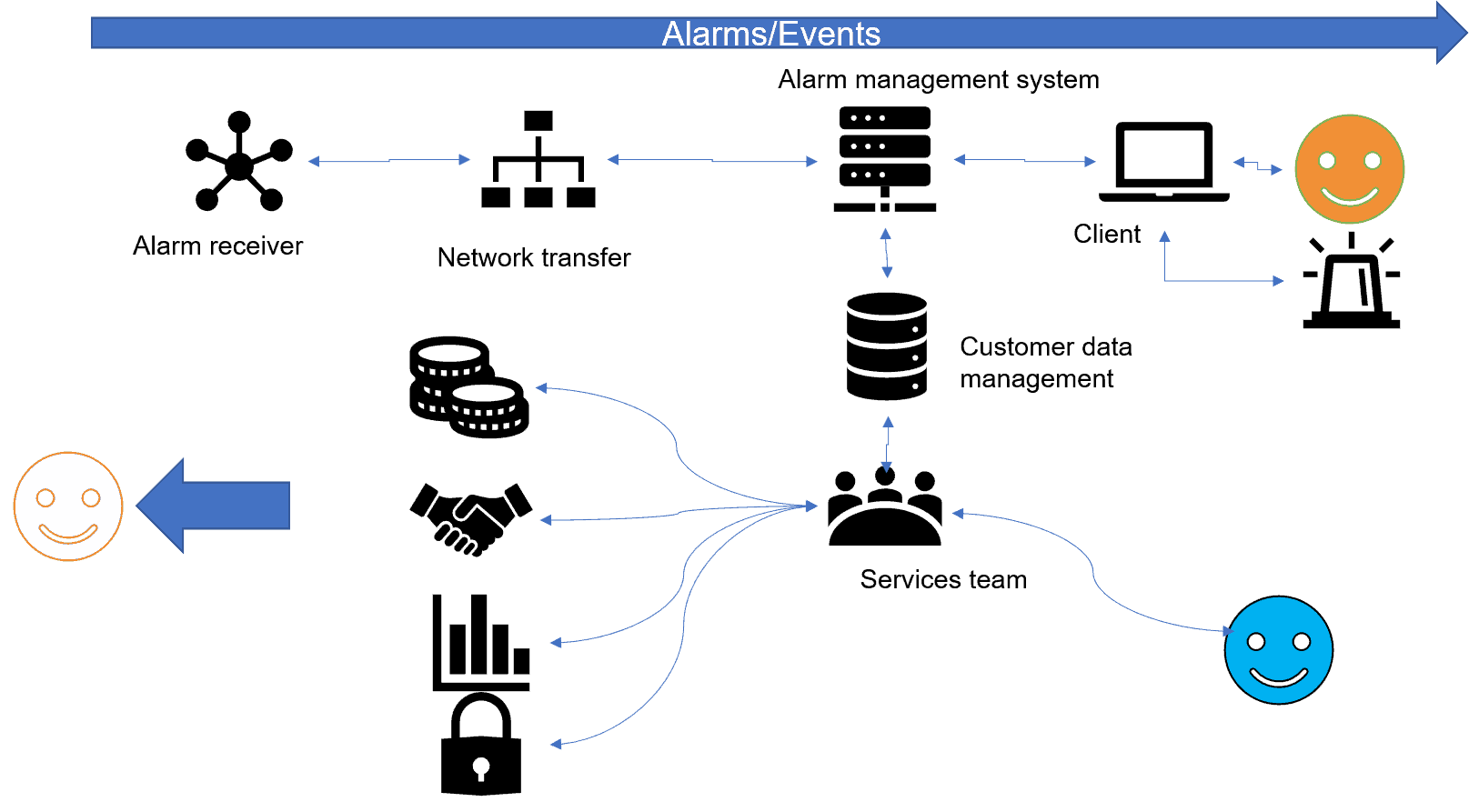
CMS operation
When an alarm occurs
- The SPC will report the alarm to the alarm receiver, this will include the customer, time, zone and other information.
- The message will be transferred via the network typically using a protocol called “Surgard” this is an industry standard
- This will be passed to the alarm management system, this is a key system in alarm management which will sync information with the customer database and manage the lifecycle of the alarm.
- Once an operator becomes available, the operator accepts the alarm and reviews the data, the data the operator will use the contact details and events from the system to determine if the alarm is valid.
- This is the point where audio / visual alarm confirmation is key and gives the alarm operator the best insight into what is happening
- Using SPC systems the operator will also be able to talk and listen live to site while the alarm is active
- The operator can choose the call the police, customers or close the alarm.
Normal operation
How does a system enroll
The CMS and the installation company must agree on commercial terms, this varies by region and complexity
The installer contacts the CMS to obtain an account code, the installer will be required in many cases to submit
- Full contact details of customer
Site layout
Details of zones and areas
Details of key holders
- The installer will contact the CMS to verify communication and send test signals
- This means triggers alarms on the system to ensure they are received correctly
How to test reporting signalling without bells
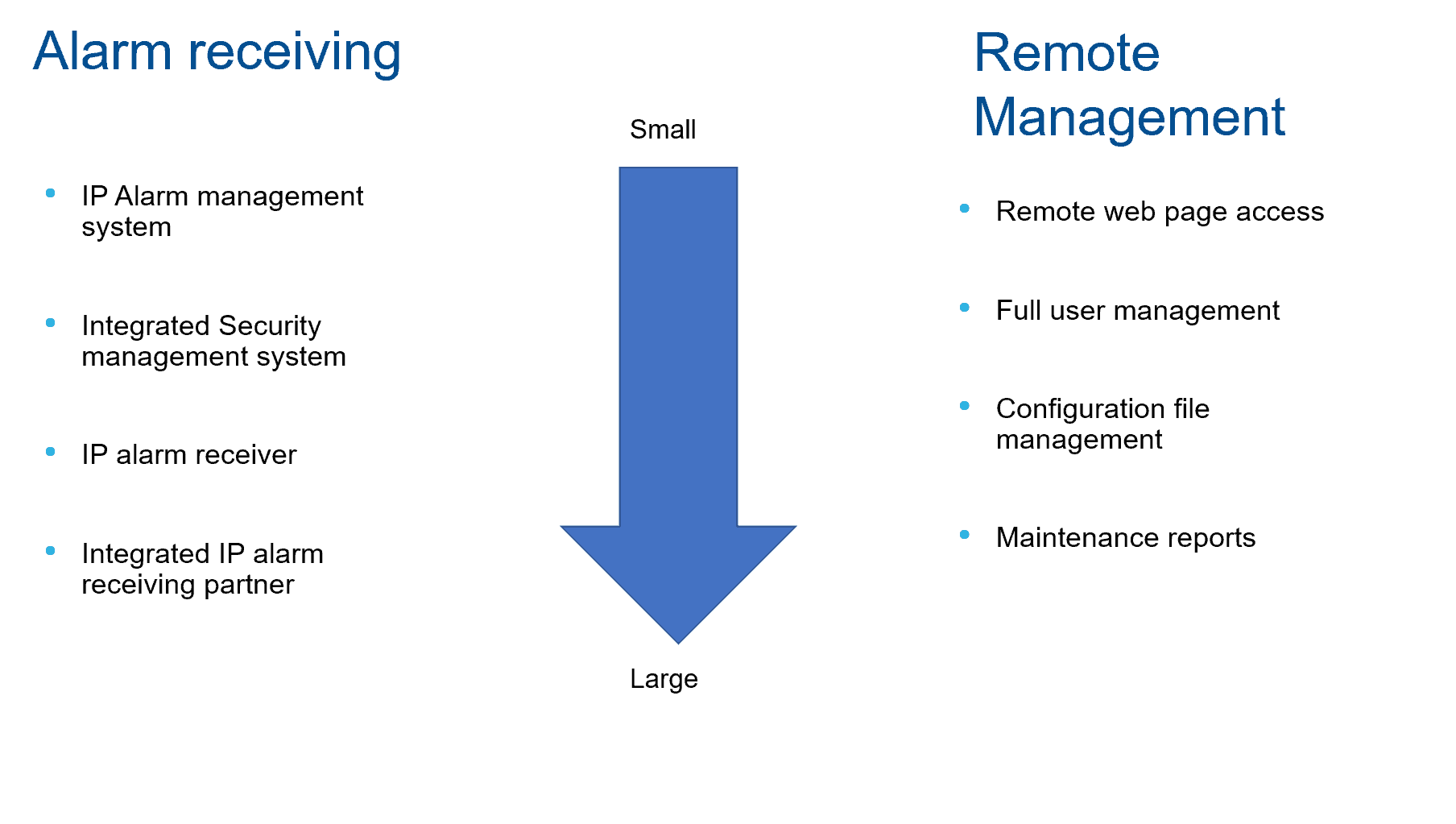
Vanderbilt have partnered with a number of the key players in the alarm reporting industry.
These companies provide two category of solutions
IP alarm receiving Click for full list of solutions
- Complete alarm management solutions Click here for full list of solutions
If in your region there is a CMS using a receiver which we do not support then Vanderbilt can undertake an integration project , to add the support for SPC IP communications into the required receiver.
This will take place under NDA and more details on integration can be found here
Vanderbilt Solutions
SPC COM XT
This is a Vanderbilt provided solution which can be used to receive IP signals from the SPC using either the EDP or FlexC protocols. The system is installed on a PC and works in a client-server architecture. The solution can provide support for 1,000 SPC connects and from the tool you may perform the following actions
- Forward events over Surguard
- View/control zone status
- View/control Area status
- View/control Door status
- Generate reports
- View verification data
- Remote keypad
For Information, please contact Vanderbilt support or sales.

IP receiver solutions
ESI - F1
F1 is the first multi-protocol, multi-network alarm receiving center that easily integrates into a diverse number of management information systems. It really performs when combined with other ESI solutions, especially the M1 management supervisor, the V1 video reassurance client-server and the RC1 digital audio recorder. F1 is one of the main components of the GLOBAL INTEGRATION product line.
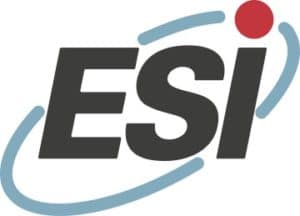
ENAI - RX8000
The RX-8000 is a digital multiprotocol alarm receiver, supporting multiple infrastructures such as PSTN, ISDN (BRI + PRI), ISDN-D / X.25, GSM, IP and GPRS. This enables you to realize a significant saving on the existing (uni-protocol) receivers.
The various outbound protocols (SIA, Scancom, Ademco 685) ensure that the RX-8000 is easy to link up to all existing Alarm Receiving Center Software. A special focus when developing new functionality for the RX-8000 was user comfort. The configuration is easy to adjust by means of a multilingual web interface, with easy consultation of the integrated online help function.
The RX-8000 is supplied with a 19” casing, including LCD and keypad. ENAI is committed to quality and continuity and has therefore used the EN standard as the basis of its products for many years. In addition to these EN standards, the RX-8000 is VdS certified (Germany). The RX-8000 ensures optimal receiver control and investment value!
Main advantages of the RX-8000:
Supports multiple alarm protocols
> Combination of analog and digital protocols
> Easy to manage using the web interface
> ISDN PRI without the use of PABX
> IP clustering options available
> Ensured compatibility with APS software
> German VdS certified and complies to the EN-50136 standard
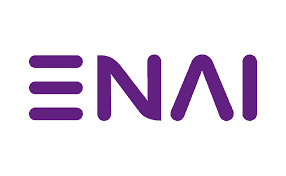
Azursoft - Osiris
The IP multiprotocol Osiris receiver offers a powerful and secure software allowing the reception of incoming events from IP transmitters.
Osiris receiver is an IP multiprotocol receiver able to decode more than twenty transmitter protocols. Osiris provides Voip communication when needed.
ARCHITECTURE
- Security: the architecture is based on several receivers and the polling management based on a replicated database offers a continuity of services: the stop of a server does not deteriorate the system operation. Receivers are installed in a DMZ for a total separation between the monitoring room LAN and the Internet network.
- Performance: additional receivers and IP traffic load balancing, provides for easy monitoring room capacity increase. The distributed architecture allows an equilibrated processing of events. Polling faults and restore are sent to Alarm Monitoring System in real-time.
- Evolutivity: simple adaptation of the architecture: add new receivers for new needs. From one receiver to dozens on complex Monitoring centers.
- Homogeneity: the complete architecture is viewed from an external point of view as an single entity (AMS, file management, configuration management)
- Interfaces: with main AMS presents on the market for the management of the events, the remote configuration downloading and audio management.
- Flexibility: script language for transcribing’s and remote controls. Each reception port can be redirected towards two different AMS. System administration is controlled in real-time from the LAN with the Osiris Console windows software.
- Ease of use: the architecture allows the referencing of a new receiver, a new port or a protocol in a matter of seconds.
Integration of new customer’s id and polling control are automatically activated upon receiving the first connection of the transmitter. An API also allows adding news sites from a foreign source.

Compatible reporting devices
Webway
WEbway provide reporting devices that can be connected to the SPC system to provide a reliable communications system, you can see how an SPC is connected here
"Our systems use the best technology and are proven in thousands of implementations. Our range of signaling products are more feature packed than ever before with Ethernet, WIFI, radio, 4G single, dual and triple path solutions."
If you would like to know more about Webway solutions click here

Addsecure - Chiron
Through the alarm message gateway, Addsecure provides a VPN for alarm transmission and event diagnostics. The solution can be connected using the EDP protocol from Vanderbilt. To learn more about Addsecure click here

Summary
If you would like to find what solution may offer your business the best solution please contact us.
. To review current registered monitoring solutions visit here
